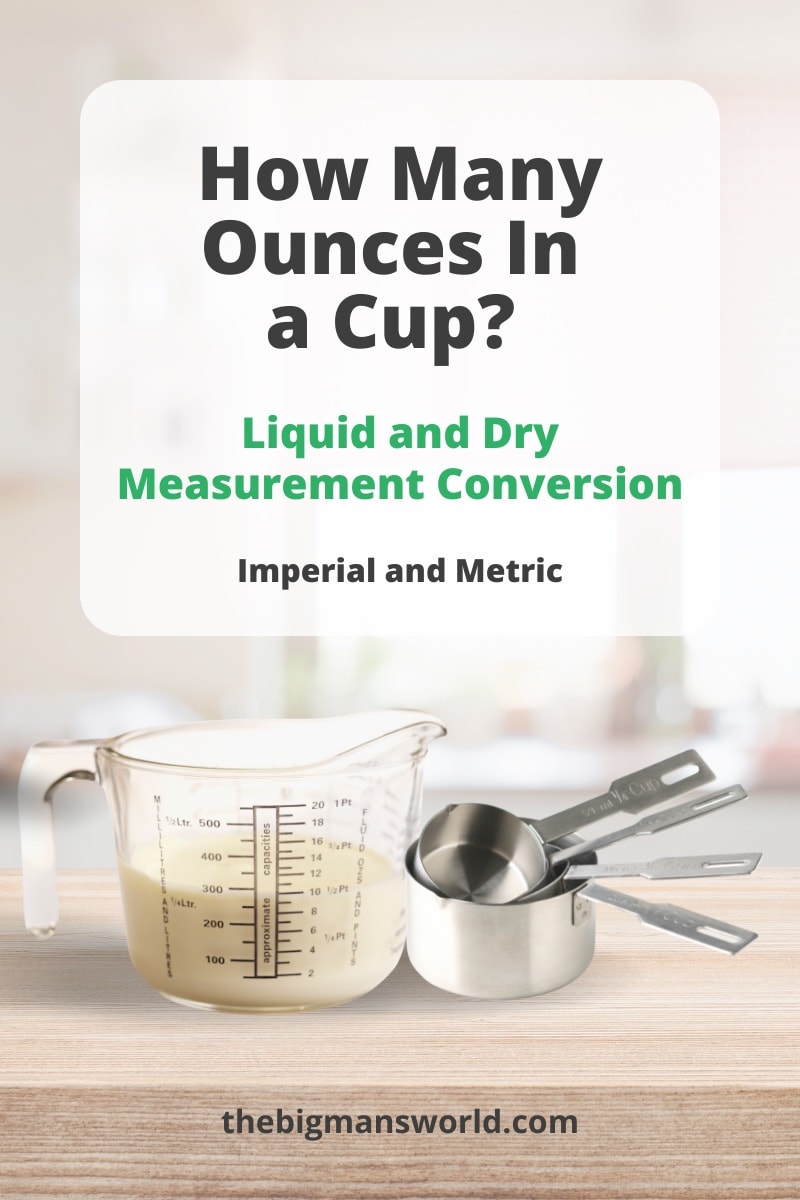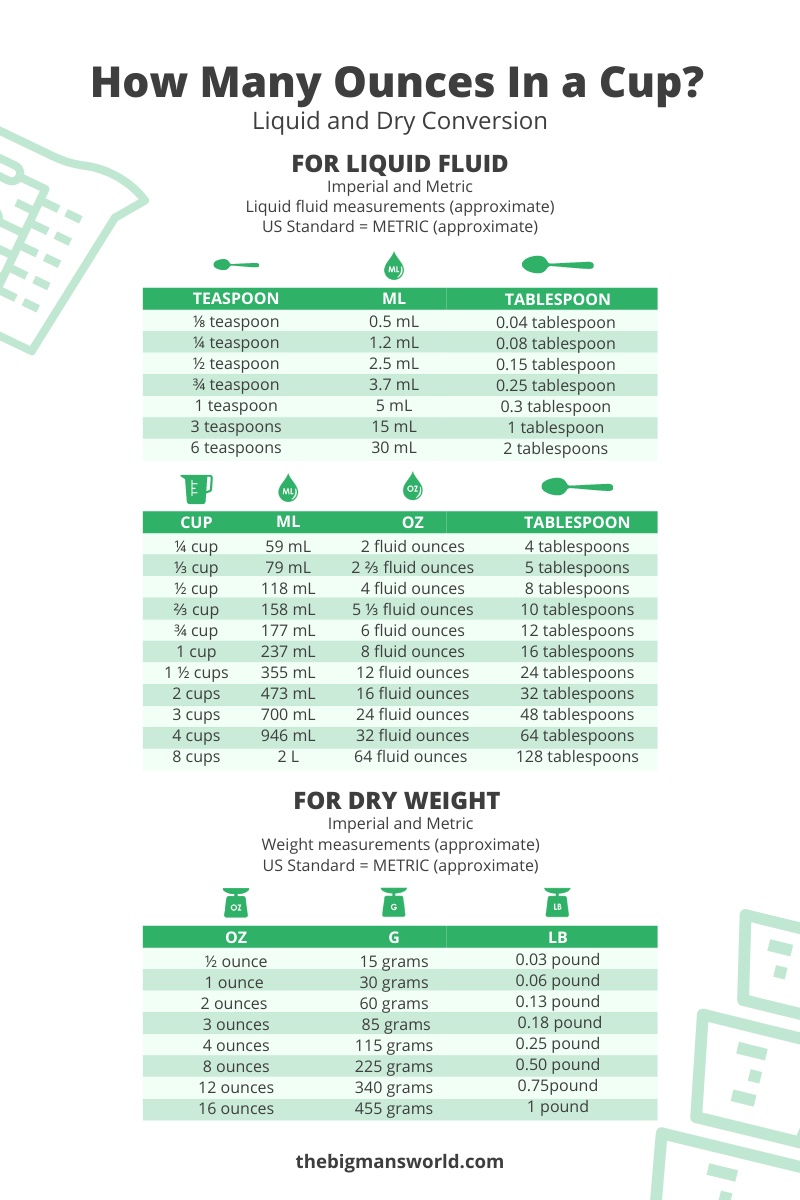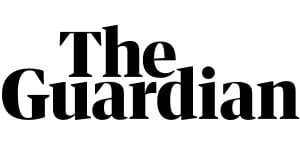This post may contain affiliate links. See my disclosure policy.
Need a quick calculation for how many ounces are in a cup? I’ll break it down with a helpful conversion chart, terms, and tips for mastering the Imperial and metric systems!

I can’t tell you how many times I’ve come across a recipe with measurements I couldn’t wrap my brain around. Unfortunately, there are different measurement systems, and they’re not created equal.
There are plenty of calculators online, but flipping back and forth between screens is a pain. It’s surprisingly easy to remember this conversion once you read through my cooking resources. This time, we’re covering ounces to cups!
Table of Contents
What is an ounce?
An ounce is a unit of measure used to weigh out volume, weight, and mass. It measures small quantities of ingredients in recipes or the specific weight of an item.
Ounces are used in America and other countries that follow the British Imperial system. In Europe and countries that use the metric system, grams are used instead.
What is a cup?
A cup is a kitchen tool used to measure and portion out dry or liquid ingredients for cooking and baking. They usually come in sets with varying sizes to get precise measurements.
In the US, one cup equals ½ of a US pint.
In the metric system, 1 metric cup equals 250 milliliters.
How to convert ounces to cups
The next time you see a recipe that lists ounces but you need cups, refer to this chart:
- 1 cup = 8 fluid ounces
- ¾ cup = 6 fluid ounces
- ½ cup = 4 fluid ounces
- ¼ cup = 2 fluid ounces
- 1 cup = 4.5 dry-weight ounces
Here is a helpful measurement conversion chart for converting between ounces and cups for dry ingredients. These are rounded to the nearest whole number.
| Ounces (oz) | Grams (g) | Pounds (lb) |
| 1/2 ounce | 15 grams | 0.03125 pounds |
| 1 ounce | 28 grams | 0.0625 pounds |
| 2 ounces | 56 grams | 0.125 pounds |
| 3 ounces | 85 grams | 0.1875 pounds |
| 4 ounces | 113 grams | 0.25 pounds |
| 5 ounces | 142 grams | 0.3125 pounds |
| 8 ounces | 226 grams | 0.5 pounds |
| 10 ounces | 283 grams | 0.625 pounds |
| 12 ounces | 340 grams | 0.75 pounds |
| 15 ounces | 425 grams | 0.9375 pounds |
Below is a conversion chart for converting between ounces and cups for liquid ingredients. These are rounded to the nearest whole number.
| Ounces (fl oz) | Cups | Milliliters (mL) | Tablespoons (Tbsp) |
| 2 fl oz | 1/4 cup | 59 mL | 4 Tbsp |
| 2 2/3 fl oz | 1/3 cup | 79 mL | 5 Tbsp |
| 4 fl oz | 1/2 cup | 118 mL | 8 Tbsp |
| 5 1/3 fl oz | 2/3 cup | 158 mL | 10 Tbsp |
| 6 fl oz | 3/4 cup | 177 mL | 12 Tbsp |
| 8 fl oz | 1 cup | 237 mL | 16 Tbsp |
| 12 fl oz | 1 1/2 cups | 355 mL | 24 Tbsp |
| 16 fl oz | 2 cups | 474 mL | 32 Tbsp |
| 32 fl oz | 4 cups | 948 mL | 64 Tbsp |
| 64 fl oz | 8 cups | 1896 mL | 128 Tbsp |
Best tools for measuring liquid and dry ingredients
There are two types of measuring cups you’ll need for measuring wet and dry ingredients: liquid measuring cups and dry measuring cups.
Here are some tips for accurately measuring cups:
Measuring dry cups
- Sift the dry ingredients first to remove any clumps
- Carefully scoop the ingredient into the measuring cup
- Place the cup on a leveled surface
- Use something flat (like the back of a knife) and run it along the edge of the cup to remove any excess
Measuring liquid cups
- Pour the liquid in until it reaches the surface line. If it overflows, it’s too much.
- Keep the cup at eye level on a flat surface.
More tips for measuring cups
- Food scale. While not absolutely necessary, having a food scale is useful to have, especially when measuring liquids.
- Sticky ingredients. Viscous ingredients (like molasses or honey) can be measured using special adjustable measuring plungers. Alternatively, grease a measuring cup with oil before adding your sticky ingredients.
- Don’t pack dry ingredients. Unless the recipe calls for a ‘heaping cup,’ as this can affect the accuracy.
- Measuring semi-firm ingredients. Butter and cream cheese are two examples of wet ingredients that are sold in a solid state. To measure them correctly in a cup, they must be soft/softened.
Fluid ounces to cups
There are 8 fluid ounces in 1 cup. This is according to the US system. If using liquid ingredients, we measure them in fluid ounces.
Dry ounces to cups
There are 4 1/2 dry-weight ounces in 1 cup. This, too, is according to the US system. With dry ingredients, it’s important to remember that they need to be measured by weight.
British vs. American measuring cups
The good news is there is virtually no difference between British and American measuring cups, so unless you’re using a VERY precise recipe, it shouldn’t matter.
1 UK cup (metric system) = 250 ml
1 US cup (imperial system) = 240 ml

Frequently Asked Questions
There are 4.5 ounces of dry ingredients in a cup.
A cup of water contains eight liquid ounces.
A cup of flour has 4 1/2 ounces.
A cup of butter, measured in its solid state, has eight ounces of butter.














This was so helpful!!
Thank you very much for replying. I don’t do much other than emails; so I will keep my eyes peeled!
Oh dear! I got really excited when I saw this post, Arman.
I try and convert and measure everything on my scales into grams, rather than ounces; as it works so well for me, (as long as I google for wet AND dry:).
However it is always a trial, as I never remember the CUP equivalents for the next time I do a new recipe.
If you had a conversion table for wet and dry cups into GRAMS I would never leave you!! Or if you or anyone can direct me to a web page that does, I would really appreciate it.
By the way, thank you for the brilliant recipes and ideas that you have given us. I love them!
Stay tuned, Jules- Coming up 🙂
This measurement guide is a true treasure. Can’t thank u enough
Good stuff!! I was told by my daughter that you could use liquid measuring cup for oatmeal ,I have my doubts. We use two to one ratio. Is she wrong? Thank you sir!